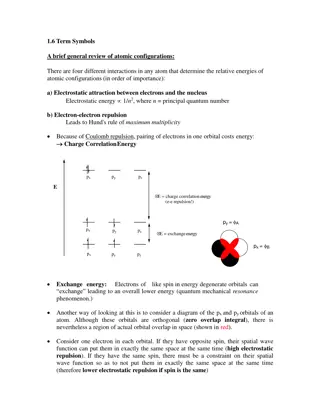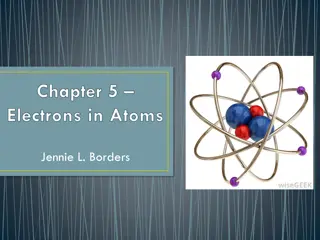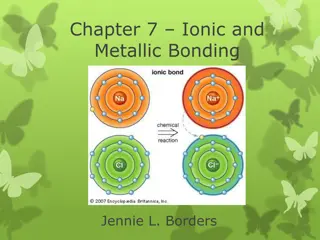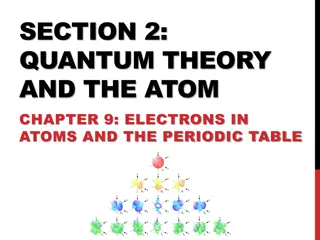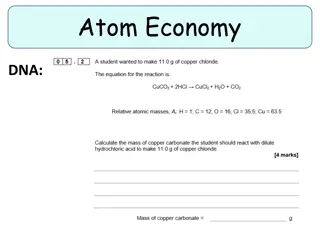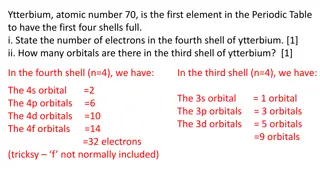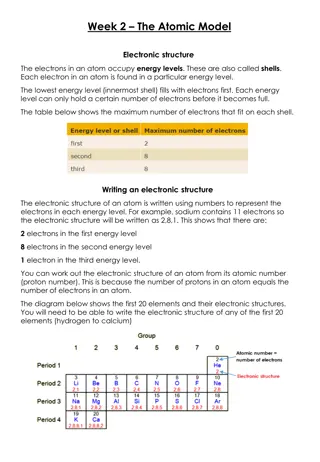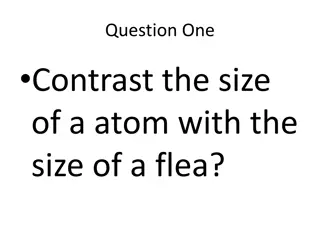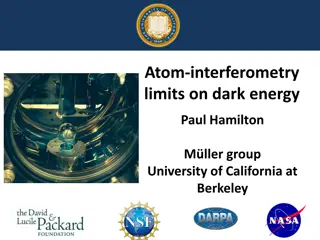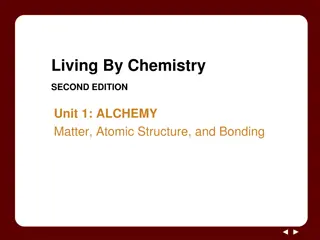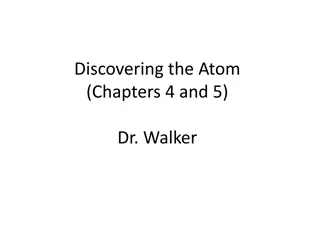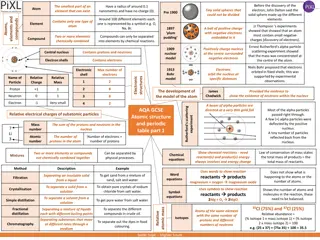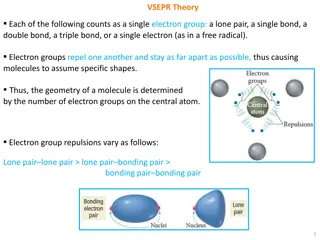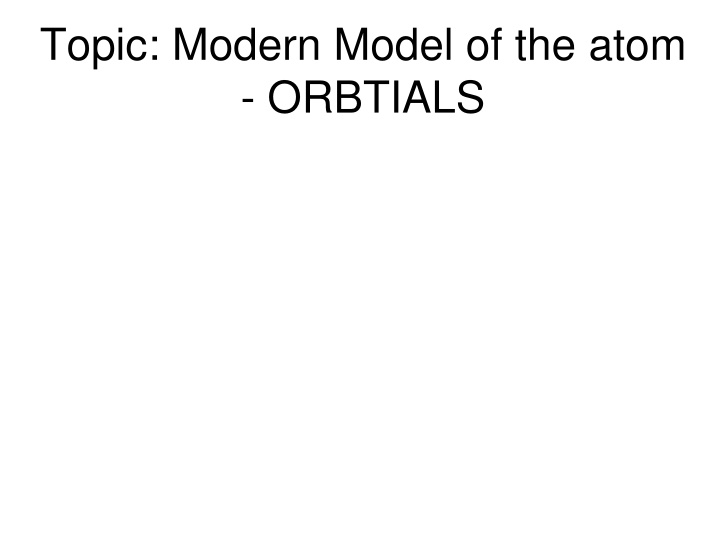
Atomic Orbitals and Electron Configurations
Explore the modern model of the atom, focusing on orbitals, principal energy levels, sublevels, and electron configurations. Learn about the arrangement of electrons in shells, sublevels, and orbitals within the atom, including the differences between the Bohr model and the wave mechanical model.
Uploaded on | 0 Views
Download Presentation

Please find below an Image/Link to download the presentation.
The content on the website is provided AS IS for your information and personal use only. It may not be sold, licensed, or shared on other websites without obtaining consent from the author. If you encounter any issues during the download, it is possible that the publisher has removed the file from their server.
You are allowed to download the files provided on this website for personal or commercial use, subject to the condition that they are used lawfully. All files are the property of their respective owners.
The content on the website is provided AS IS for your information and personal use only. It may not be sold, licensed, or shared on other websites without obtaining consent from the author.
E N D
Presentation Transcript
Topic: Modern Model of the atom - ORBTIALS
Principal Energy Levels (PEL) Also known as shells Can have values of 1, 2, 3, 4 .. (whole numbers) Electrons in PEL s with greater numbers have greater energy. [Similar to rows of seats in a stadium)
Sublevels Each principle energy level is made up of 1 or more sublevels 1st PEL = s (1 sublevel) 2nd PEL = s,p (2 sublevels) 3rd PEL = s,p,d (3 sublevels) 4th PEL = s,p,d,f (4 sublevels)
Orbitals Each sublevel contains 1 or more orbitals Each orbital holds a max of 2 electrons s has 1 orbital p has 3 orbitals d has 5 orbitals f has 7 orbitals 1st PEL = s (1 sublevel) = 1 orbital (____ electrons) 2nd PEL = s,p (2 sublevels) = 4 orbtials (____ electrons) 3rd PEL = s,p,d (3 sublevels) = 9 orbitals (___ electrons) 4th PEL = s,p,d,f (4 sublevels) = 16 orbitals (____ e-) 2 8 18 32
Memorize D 5 10e- S 1 2e- P 3 6e- F 7 14e- sublevels # of orbitals Max # of electrons *Each orbital holds a max of 2 electrons s p d f
Orbitals s orbital: sphere p orbital: dumbell d orbital: 4 clovers,1 double ended pacifier f orbital: funky!! Flowers? You describe! http://www.d.umn.edu/~pkiprof/ChemWebV2/AOs/ao4.html
Bohr Model vs. Modern Model (wave mechanical model) Electron = particle Orbit Holds 2n2 electrons Circular Each orbit has specific energy Exact location Electron = Wave Orbital Holds 2 electrons Not necessarily circular Each orbital has specific energy Probable location
Electron configurations Adding electrons to atoms so that the electrons are in the lowest energy levels most stable or ground state configuration Start with 1s, then work upward in order of increasing energy. Use Aufbau rule.
Aufbau 1s2 2s2 2p6 3s2 3p6 3d10 4s2 4p6 4d10 4f14 5s2 5p6 5d10 5f14 6s2 6p6 6d10 7s2 7p6 7d10
1s2 2s2 2p6 3s2 3p6 3d10 4s2 4p6 4d10 4f14 5s2 5p6 5d10 5f14 6s2 6p6 6d10 7s2 7p6 7d10 He 1s2 C 1s22s22p2 1s22s22p63s2 Mg Zn 1s22s22p63s23p6 4s23d10
From these modern configurations, we can figure out Bohr Configurations All you have to do is add up the electrons in each shell (PEL) He 1 = 2 1s2 2 C 1s22s22p2 1 = 2 2 = 2+2 2 4 Mg 1s22s22p63s2 1 = 2 2 = 2+6 3 = 2 2 8 2 Zn 1s22s22p63s23p6 4s23d10 1 = 2 2 = 2+6 3 = 2+6+10 4=2 2 8 18 2
Orbital Diagrams Shows the orbital the electron is located in Shows the spin they have to be opposite!(spin up or spin down)
Hunds Rule Maximum multiplicity most e- with same spin. So, Fill up before pairing up 1s2 2s2 2p4
Which element? How many unpaired e-? How many PEL s occupy? How many PEL s are fully occupied? How many sublevels contain e-? How many sublevels full? How many orbitals contain e-? Boron 1 2 1 3 2 3

